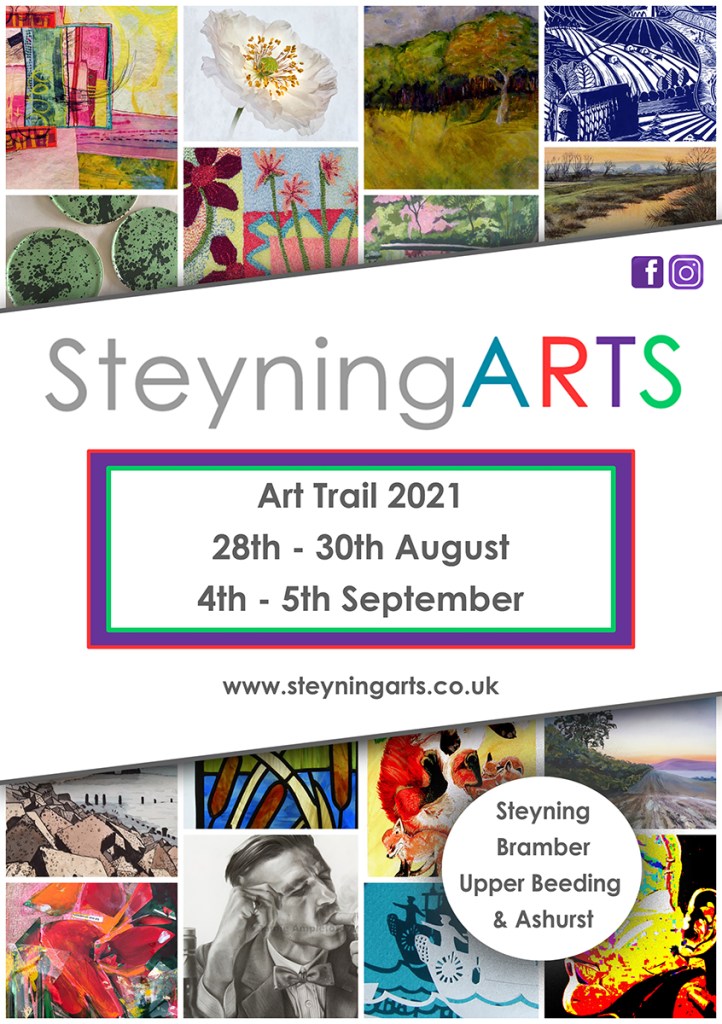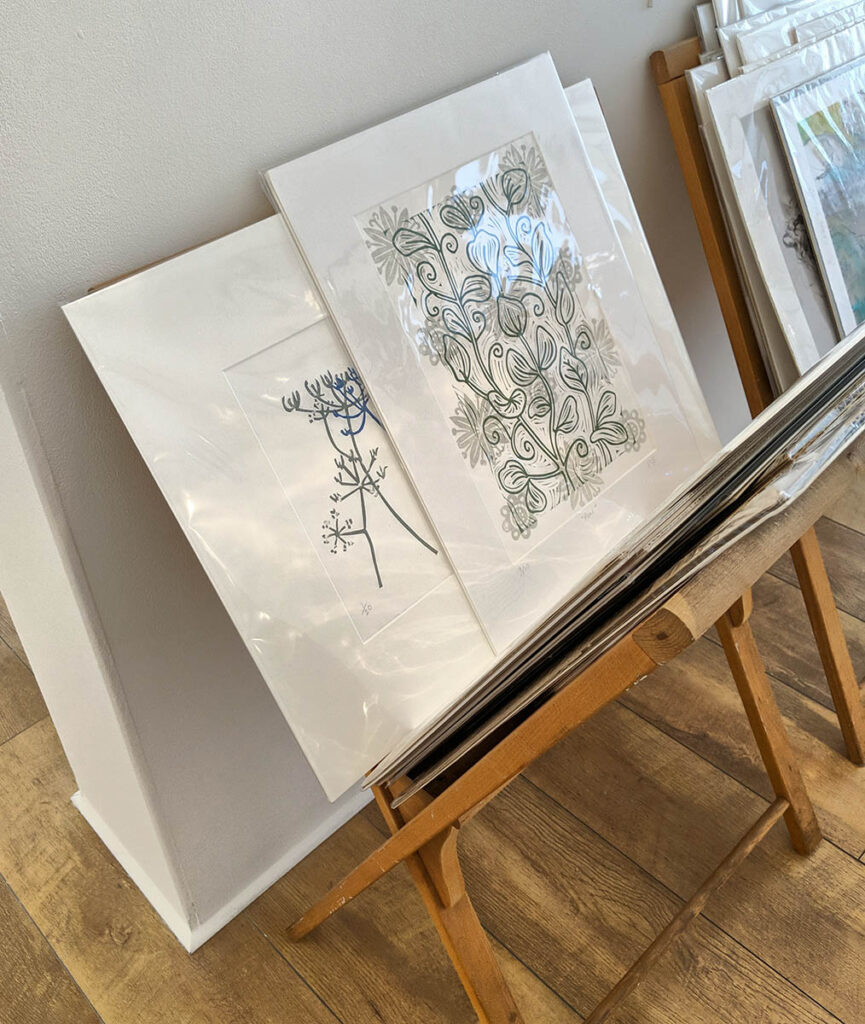
What a treat! To exhibit alongside fellow printmakers from Sussex in an exhibition dedicated solely to matters of printmaking. “INK” is curated by Peon Boyle of Sussex Printmakers and showcases the work of artists working in the medium of screen print, lino print, collograph, monoprint, etching… It’s all here.
While exploring the work on display it struck me how apt the name for this exhibition is. The medium of ink is present and is important in every aspect. Sometimes thick and raised from the surface of the paper, sometimes machine-smooth in it’s application. Resonant, moody tones created through intaglio, versus opaque colour blocks made with relief printing methods. What is it that drives our obsession with this colour-infused and oily substance which often clings to our hands and overalls as much as to the plate?

Printmaking is, in essence, the act of transferring a colour from one surface to another by pressing. It is a coming together of surfaces. Touch is the secret ingredient and is the method which creates the image. In the case of print, it is not necessarily the movement of the artists hand, the gesture or the mark so much, but a meeting between paper and plate whereby an image is produced. It is a record of something that has taken place. A good example of what Roland Barthes referred to when talking about photographic prints as a depiction of ‘what was’ and not “what is”.
In ancient times Japanese fishermen inked the bodies of fish they had caught and pressed the scaly surface to paper in order to record their catch. In even more ancient times the earth pressed tiny sea creatures into soft sediment creating fossils. Pressing then, is a process of fixing things, catching time or preserving a moment? Perhaps this is what draws artists to the press and the plate, and the medium of ink.

A seed head, a skull, waves fixed in mid-motion, pebbles on the beach and the turning screws of the press itself. It’s all here, ready for you to contemplate, in your own time, at INK.
“INK” at Colonnade House in Worthing, runs from 14th September to 1st October 2021.
Exhibiting Artists;
Anna Vartianinen, Barbara Byars, Sue Hawksworth, Rosemary Jones, Sarah Sepe, Melissa Birch, Martha Harris, Hattie Lockhart-smith, Nora Young, Vicky Gomez, Nicola Brewerton and Peon Boyle.





